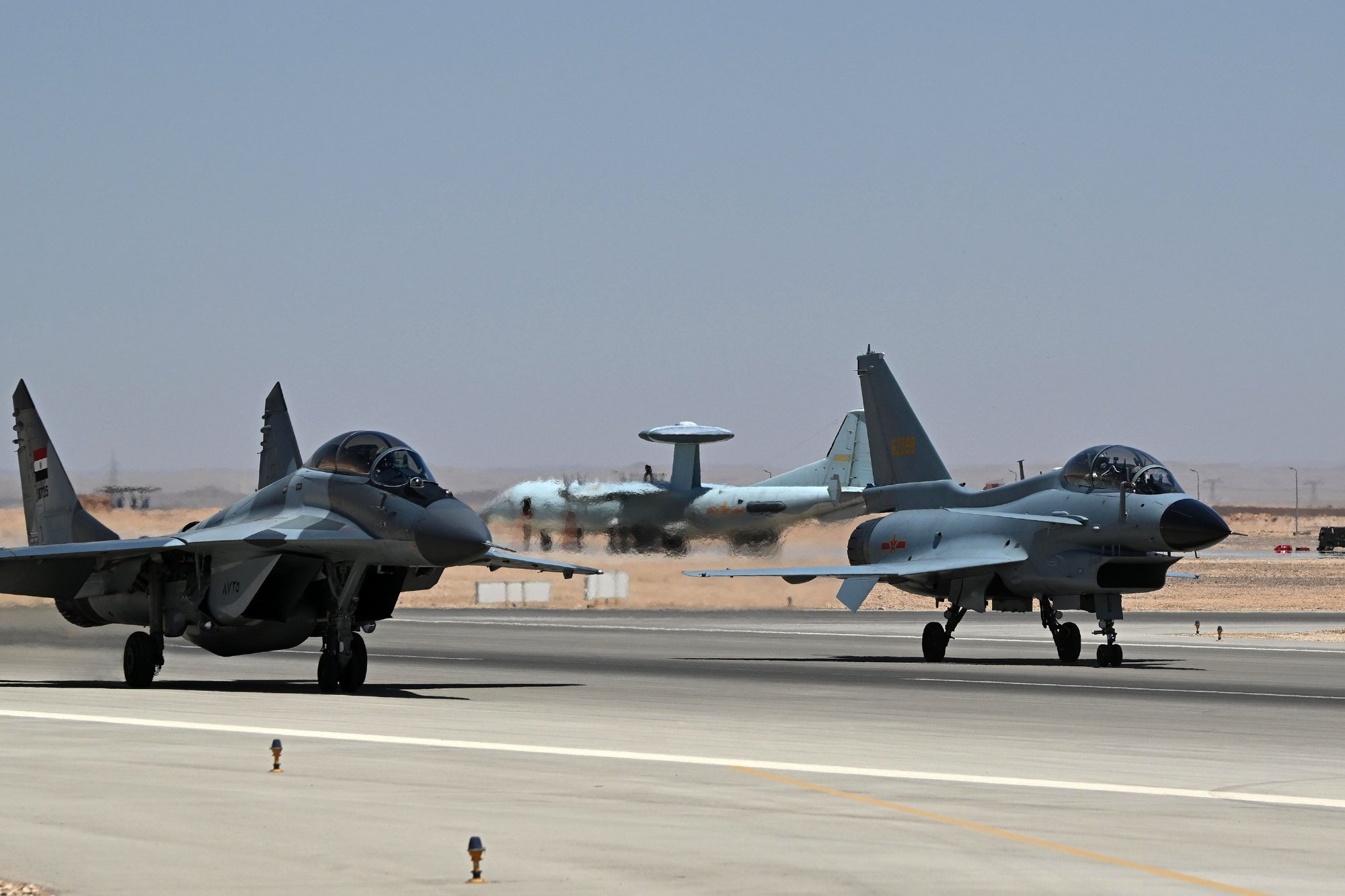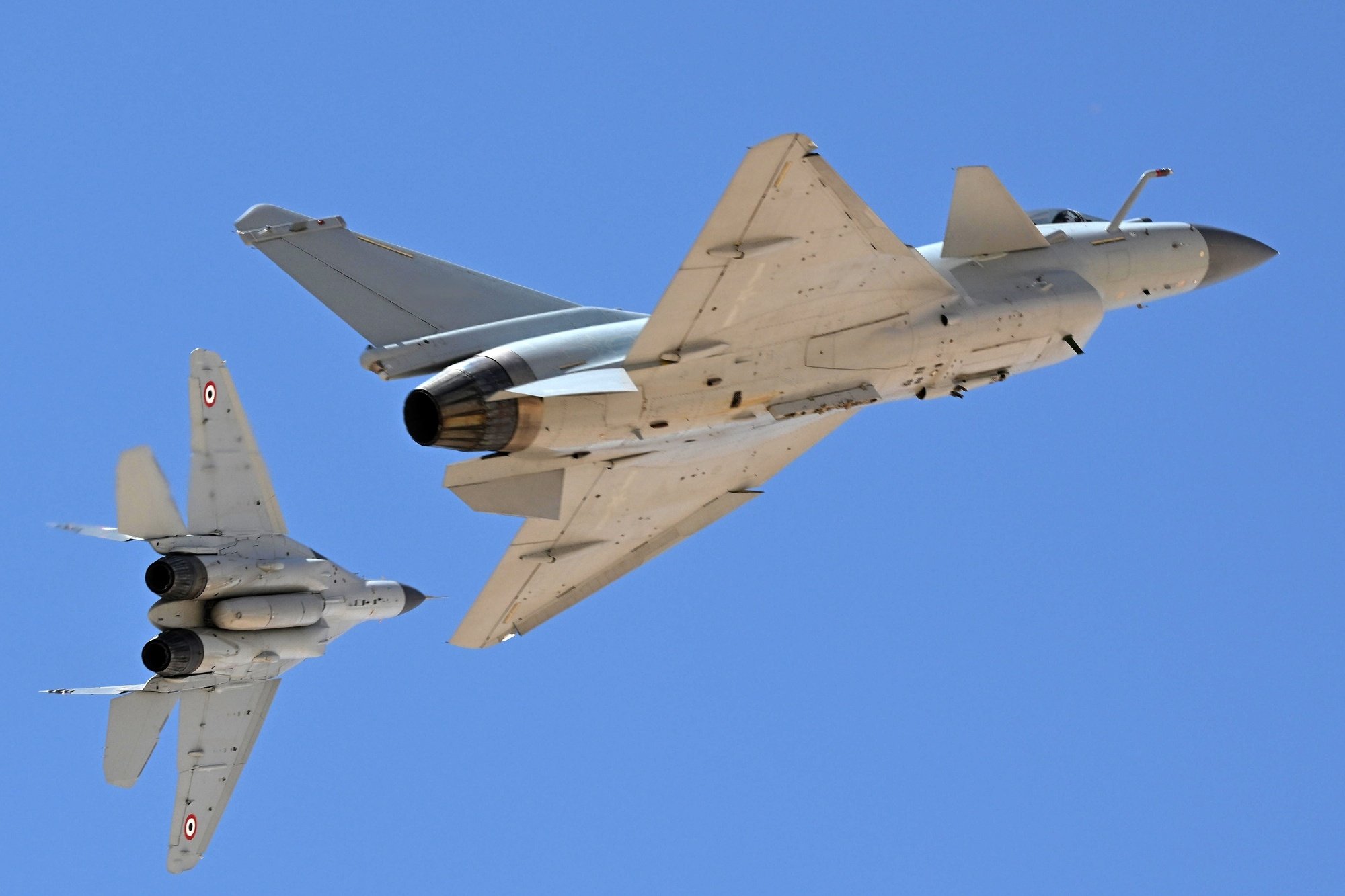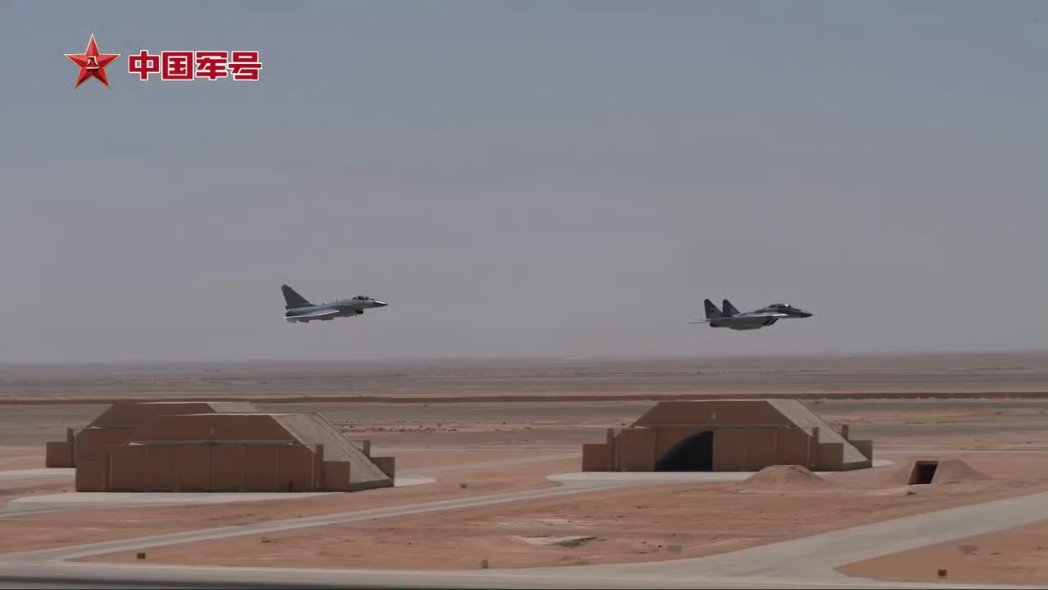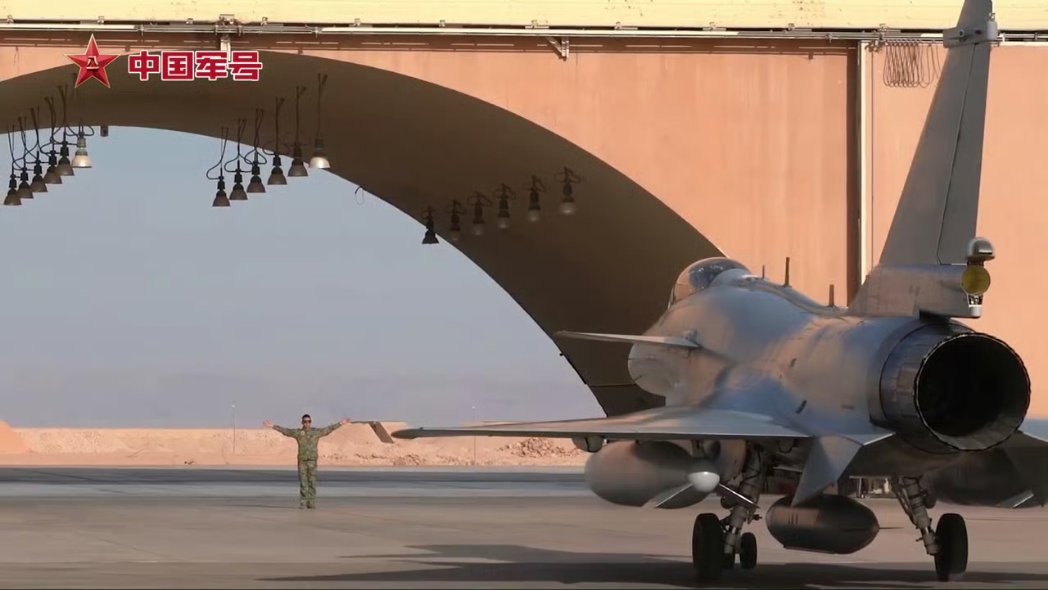China Projects Air Power Deep into Middle East as Egypt Hosts Historic J-10C, KJ-500 AEWC Combat Drills
The People’s Liberation Army Air Force (PLAAF) has deployed a potent aerial strike package consisting of J-10C multirole fighters, YU-20 aerial tankers, and KJ-500 airborne early warning and control aircraft as part of the inaugural joint China-Egypt air force exercise.
(DEFENCE SECURITY ASIA) — For the first time in military history, Chinese combat aircraft have landed on Egyptian soil to conduct joint air drills, marking a dramatic shift in regional alliances and signalling China’s growing strategic footprint in the Middle East.
The People’s Liberation Army Air Force (PLAAF) has deployed a potent aerial strike package consisting of J-10C multirole fighters, YU-20 aerial tankers, and KJ-500 airborne early warning and control aircraft as part of the inaugural joint China-Egypt air force exercise.
Announced by the Chinese Ministry of National Defense, the bilateral drill, dubbed “Eagles of Civilization 2025”, commenced in mid-April and is scheduled to continue into early May.
Beijing has framed the exercise as a milestone in military diplomacy, describing it as an initiative to “promote practical cooperation and enhance friendship and mutual trust,” signalling elevated defence ties between the two capitals.
“This is the first joint military exercise between the two countries, and it plays a significant role in fostering pragmatic cooperation, as well as reinforcing mutual trust and friendship.”
Speaking to Global Times, a Chinese military strategist noted that the assets deployed to Egypt are not only front-line platforms but also represent a unified combat ecosystem designed for integrated warfare.
According to China Central Television’s (CCTV) military channel, the joint drill began on Saturday morning at an undisclosed air base in Egypt, with China contributing a comprehensive mix of fighter jets, airborne surveillance platforms, tanker aircraft, and rotary-wing assets.

Photographs released by CCTV confirmed that the PLAAF dispatched both single-seat J-10C and twin-seat J-10S fighters, alongside its high-capacity YU-20 tankers and the advanced KJ-500 AEW&C aircraft, while Egypt deployed its Russian-made MiG-29 fighters to the exercise.
The Chinese warplanes represent a multi-domain force package capable of conducting offensive and defensive missions, supported by real-time data sharing and extended-range combat operations.
“The aircraft operate as a tightly integrated system: the YU-20 provides aerial refuelling for the J-10C, greatly extending its operational range, while the KJ-500 offers robust data fusion and battlefield situational awareness through its advanced radar systems,” said Wang Ya’nan, editor-in-chief of a Chinese aerospace magazine, in remarks to Global Times.
The exercise showcases China’s expanding influence in the Middle East, where it is increasingly positioning itself as a credible alternative to traditional Western defence partners, especially among nations seeking diversification in military procurement and strategic alignment.
Wang emphasized that China’s engagement in joint drills with friendly nations has become a cornerstone of its foreign defence policy, serving to build trust, enhance interoperability, and project military professionalism abroad.
He added that Egypt, currently in the process of modernizing its military arsenal, is likely to view the exercise as a unique opportunity to assess the performance and technological maturity of Chinese defence platforms with future acquisition in mind.

International defence reports have already indicated that Cairo is considering the acquisition of up to 40 J-10CE fighters—a specialised export variant of the J-10C “Vigorous Dragon”—developed by Chengdu Aircraft Corporation specifically for overseas clients.
The J-10CE is armed with the PL-15, one of the world’s most formidable beyond-visual-range (BVR) air-to-air missiles, designed to neutralize threats before adversaries even detect the incoming platform.
Developed by the China Academy of Launch Vehicle Technology (CALT), the PL-15 is equipped with an active AESA radar seeker, boasts speeds in excess of Mach 4, and is estimated to have an operational range exceeding 300 kilometres—placing it in direct competition with the U.S. AIM-120D AMRAAM and Europe’s MBDA METEOR.
This extended reach enables Chinese fighters to conduct first-shot engagements far outside the adversary’s missile envelope, offering a significant tactical edge in any potential air superiority contest.
Currently, the Egyptian Air Force operates around 200 legacy F-16 variants sourced from the United States, and Washington has recently offered upgrade packages to sustain the fleet’s combat relevance.
However, signs of Cairo’s shift toward Chinese platforms emerged as early as 2023, when senior defence officials from both countries reportedly met on the sidelines of the Langkawi International Maritime and Aerospace Exhibition (LIMA 2023) in Malaysia to discuss procurement options.

During that event, China’s elite “August 1st” aerobatic team—flying the J-10C—delivered a headline performance, underscoring Beijing’s intent to position the aircraft as a serious contender in the international fighter market.
In July 2024, China reportedly formalised its fighter jet offer to Egypt during the official visit of Air Force Commander General Mahmoud Fouad Abdel Gawaad to Beijing, where he held high-level discussions with PLAAF Chief General Chang Dingqiu.
The visit, conducted at the invitation of General Chang, was widely interpreted as a strategic effort to strengthen bilateral military ties and institutionalise defence cooperation mechanisms.
According to the Egyptian Armed Forces, General Gawaad’s visit underscores Cairo’s growing commitment to elevating military relations with Beijing to a long-term strategic partnership.
Talks between the two sides included proposals for joint training programs, technology transfer, and even co-production arrangements—indicating that China is positioning itself as more than just a hardware supplier.
As part of the itinerary, General Gawaad and his senior delegation toured China’s Tangshan Air Base, where they were given a live flight demonstration of the J-10C fighter jet in combat configuration.

In a demonstration of operational reach and air mobility, China’s J-10 fighters reportedly flew directly from Chinese territory to Egypt over a distance of 6,000 kilometres, supported mid-flight by YU-20 refuelling tankers, without making any stopovers en route.
All Chinese aircraft and associated support systems participating in the joint exercise reportedly arrived in Egypt on April 15.
According to Ahram Online, the Egypt-based military exercise spans several days and incorporates both theoretical coursework and practical mission scenarios, with a strong emphasis on synchronised sorties and collaborative mission planning.
The training is aimed at enhancing real-time operational coordination, sharing tactical expertise, and improving the readiness of aircrews and pilots for a variety of high-intensity combat situations, the report noted.
The Egyptian Armed Forces described the drills as part of a broader and ongoing initiative to deepen strategic defence cooperation with China, while simultaneously strengthening joint military capabilities across the board.
— DEFENCE SECURITY ASIA




